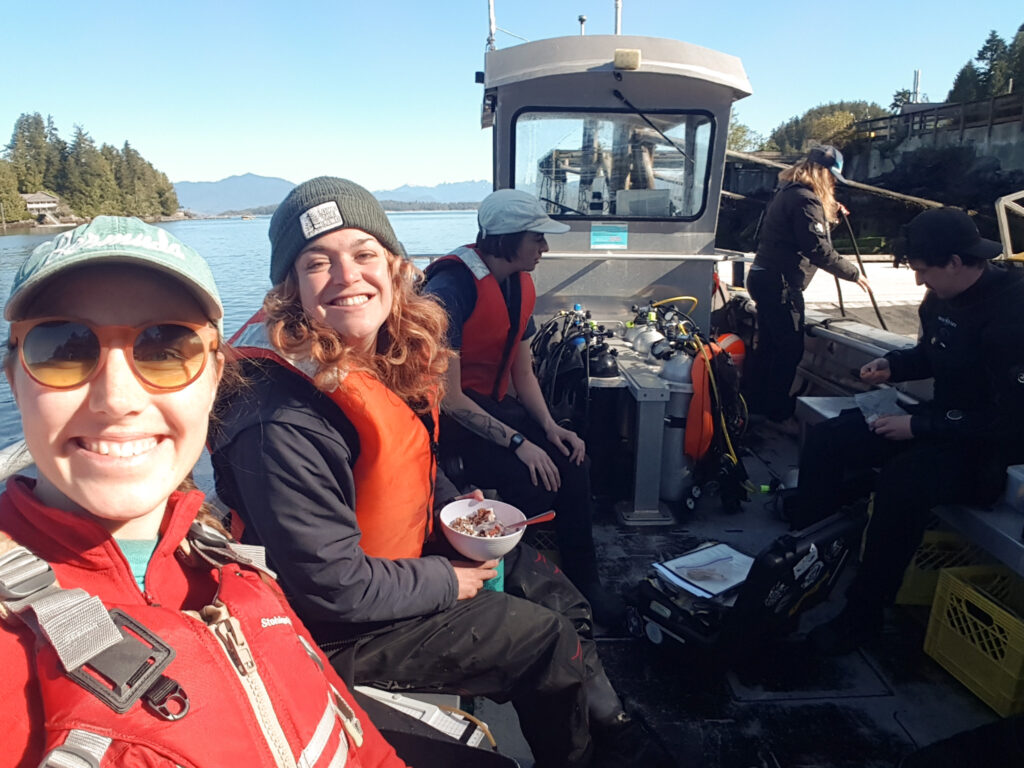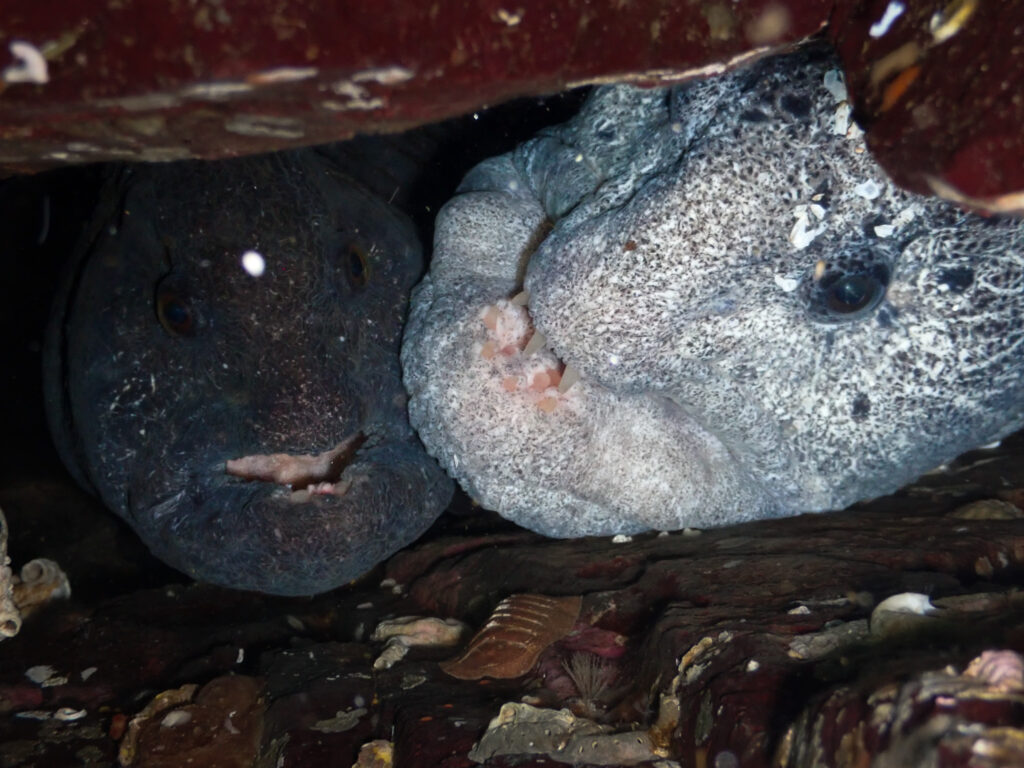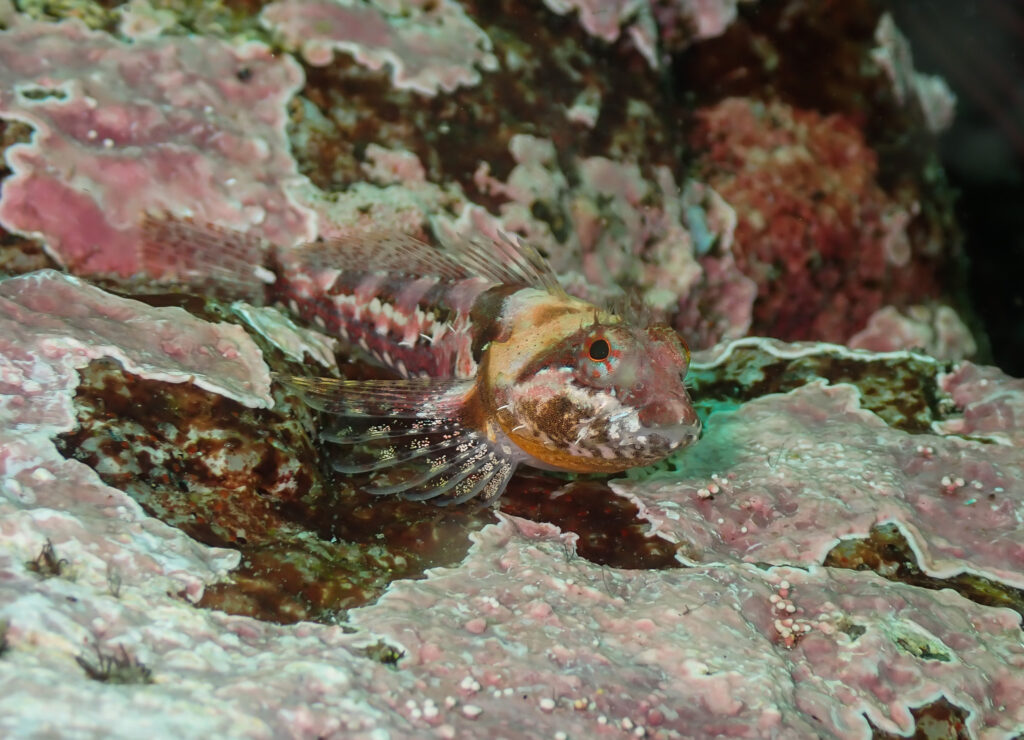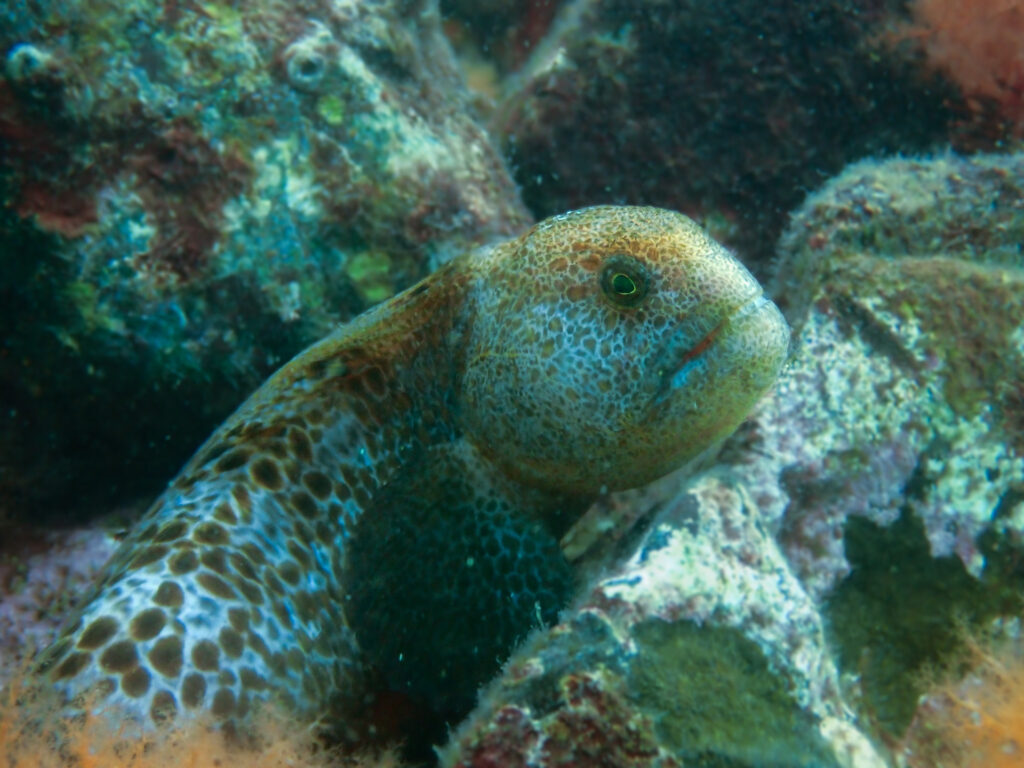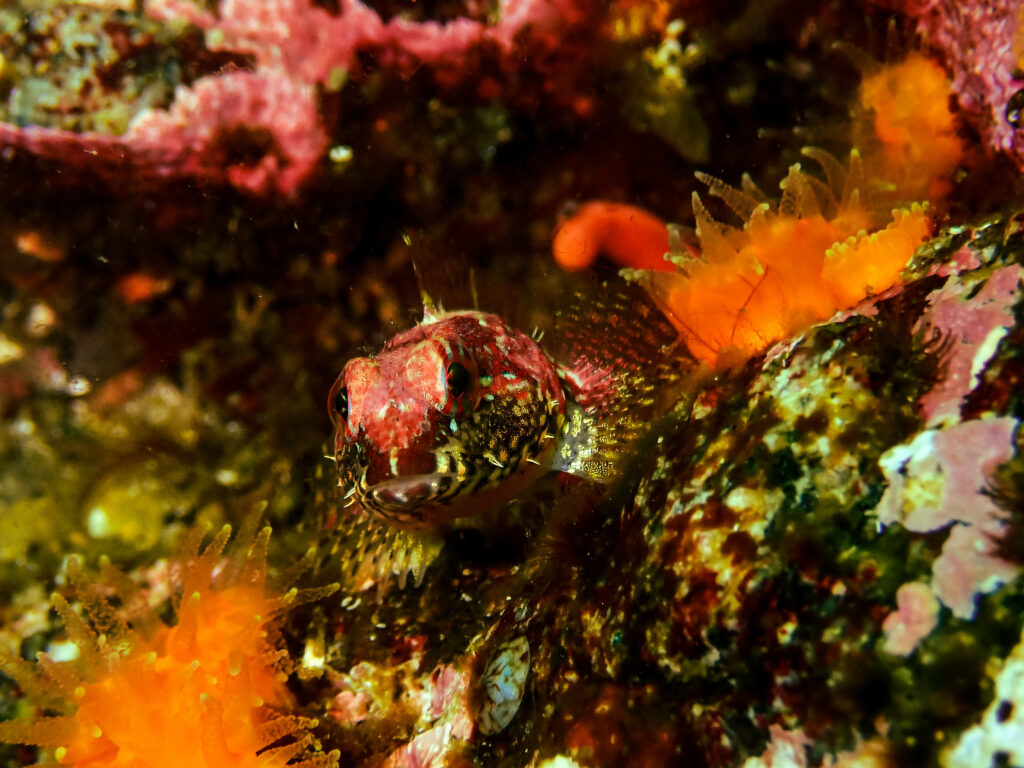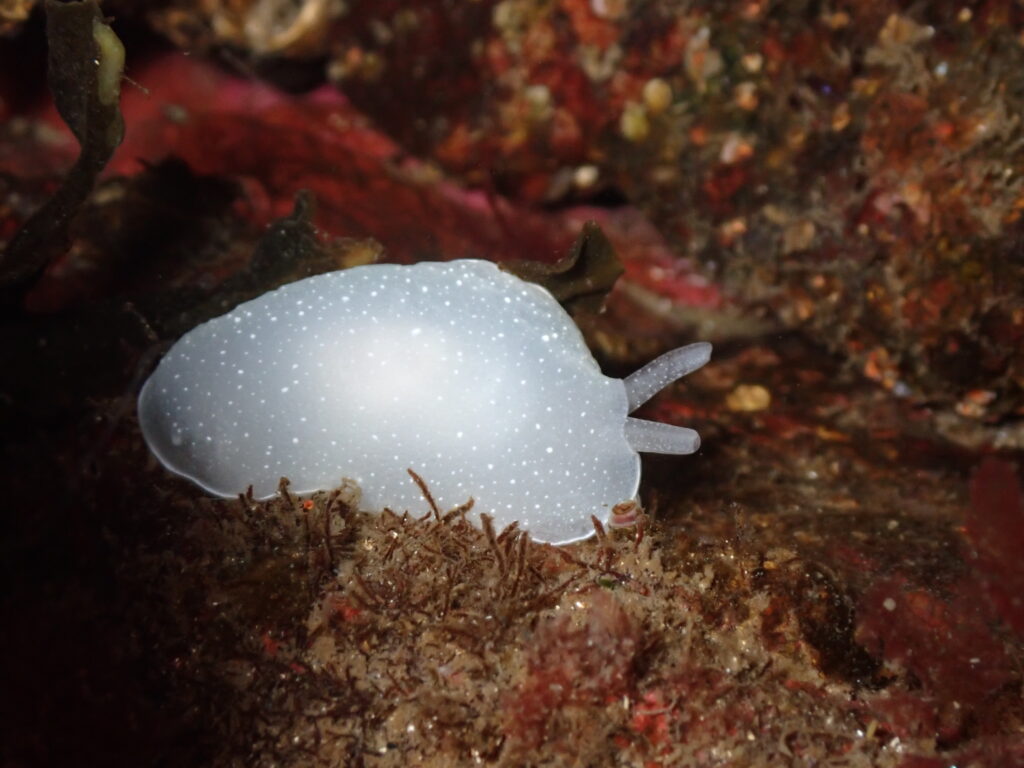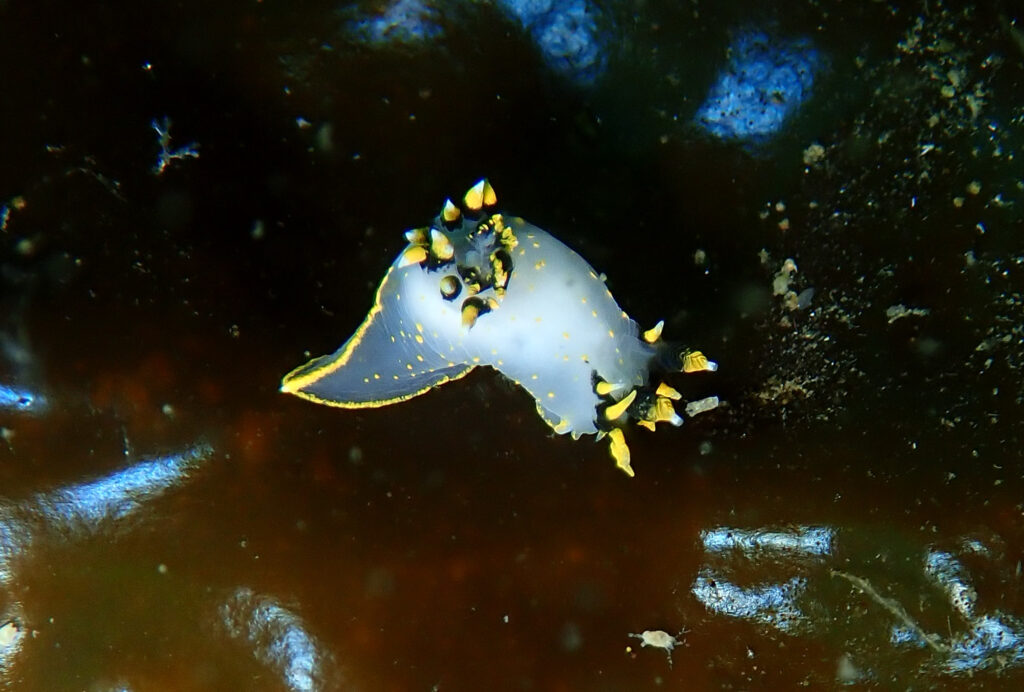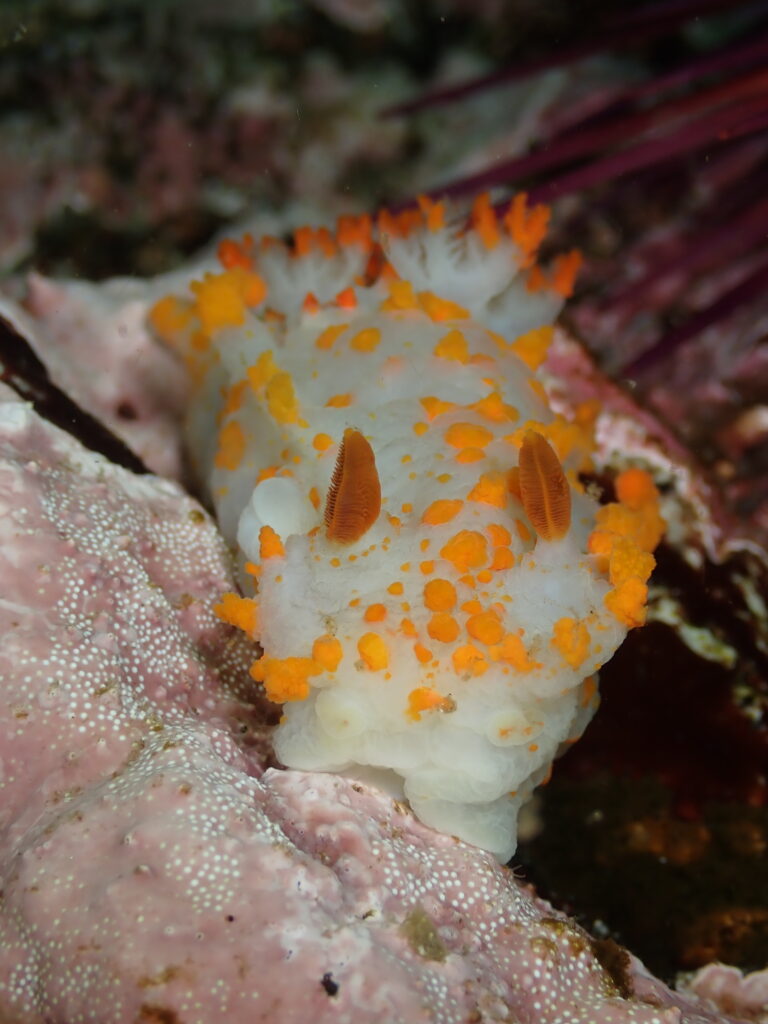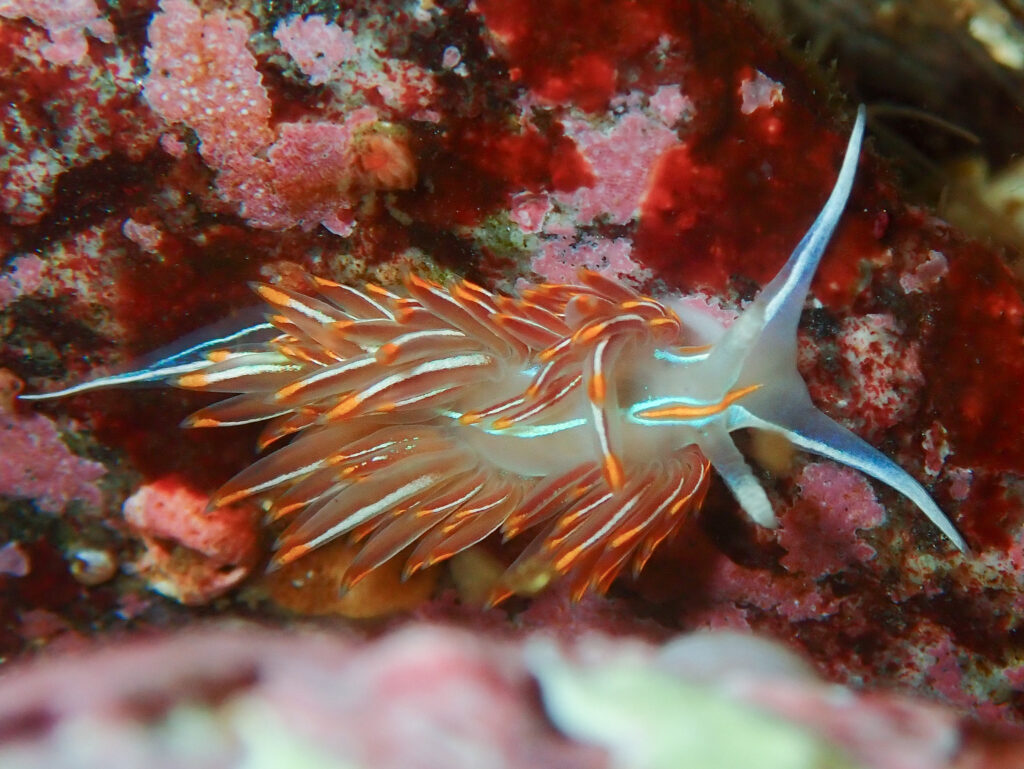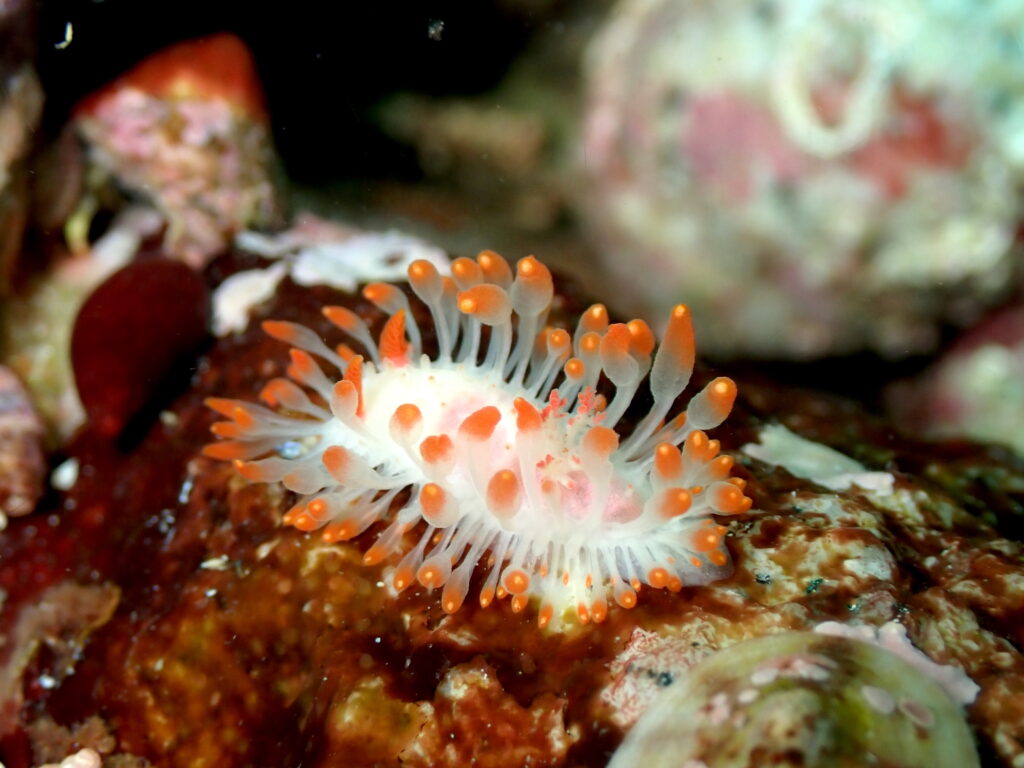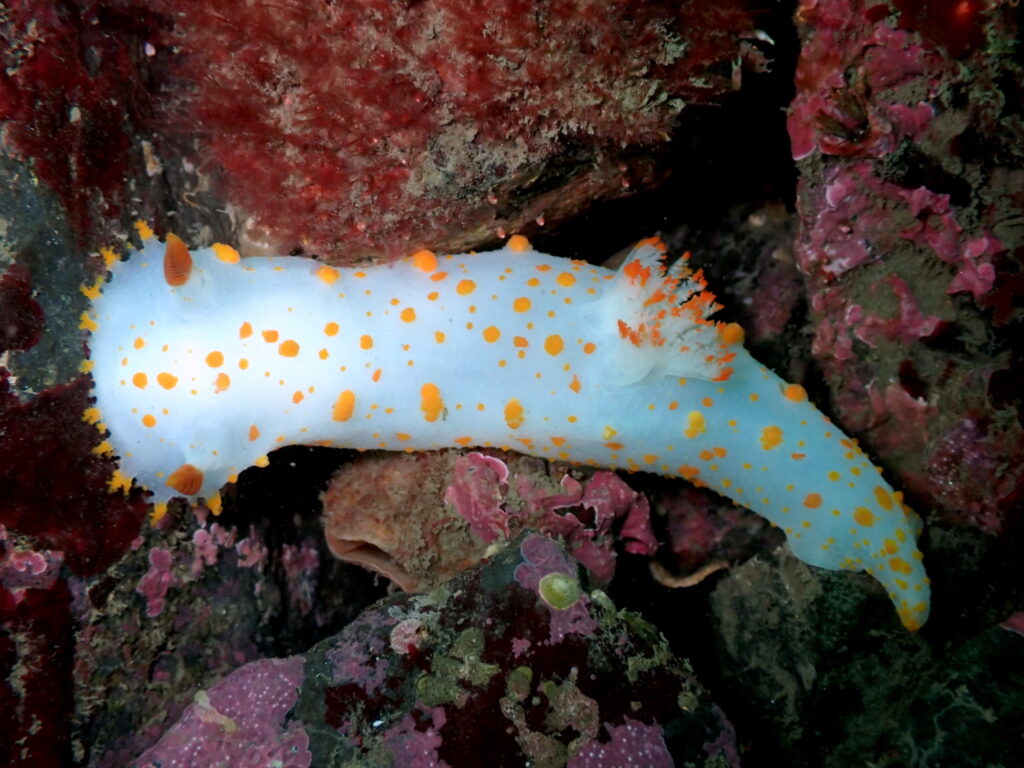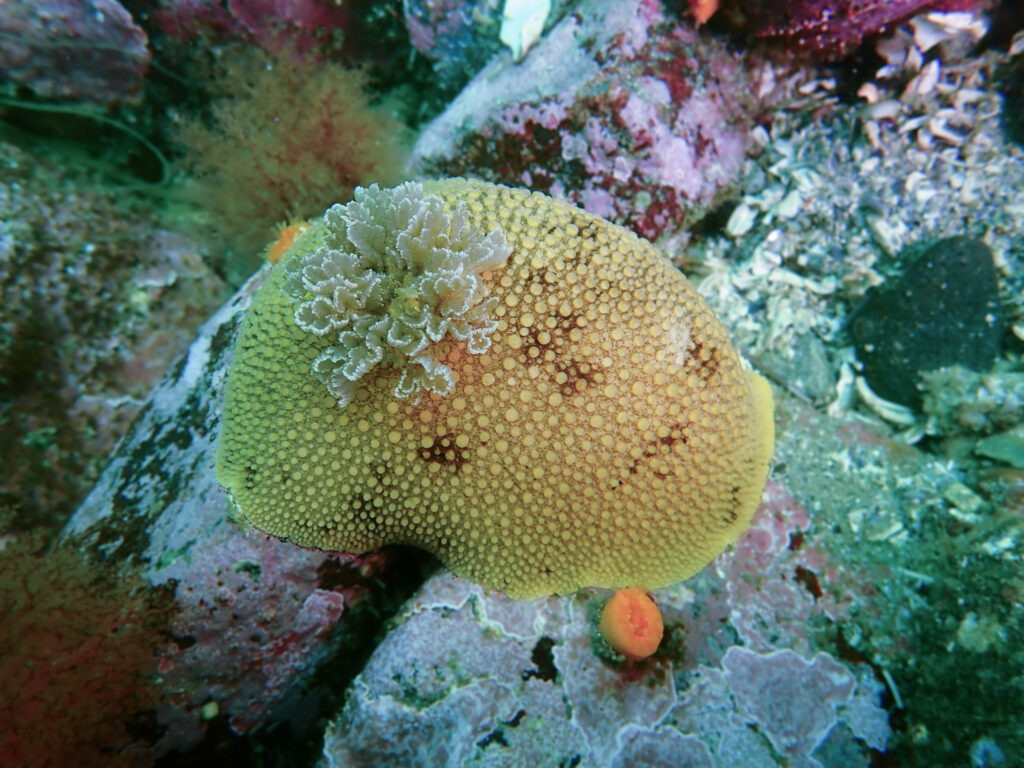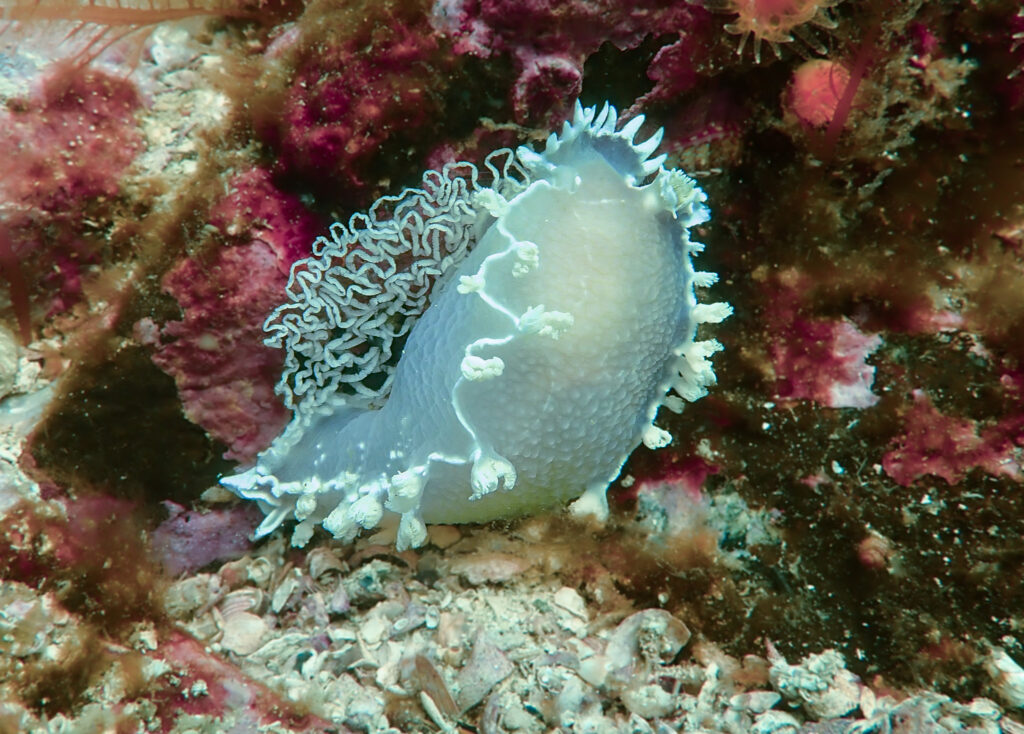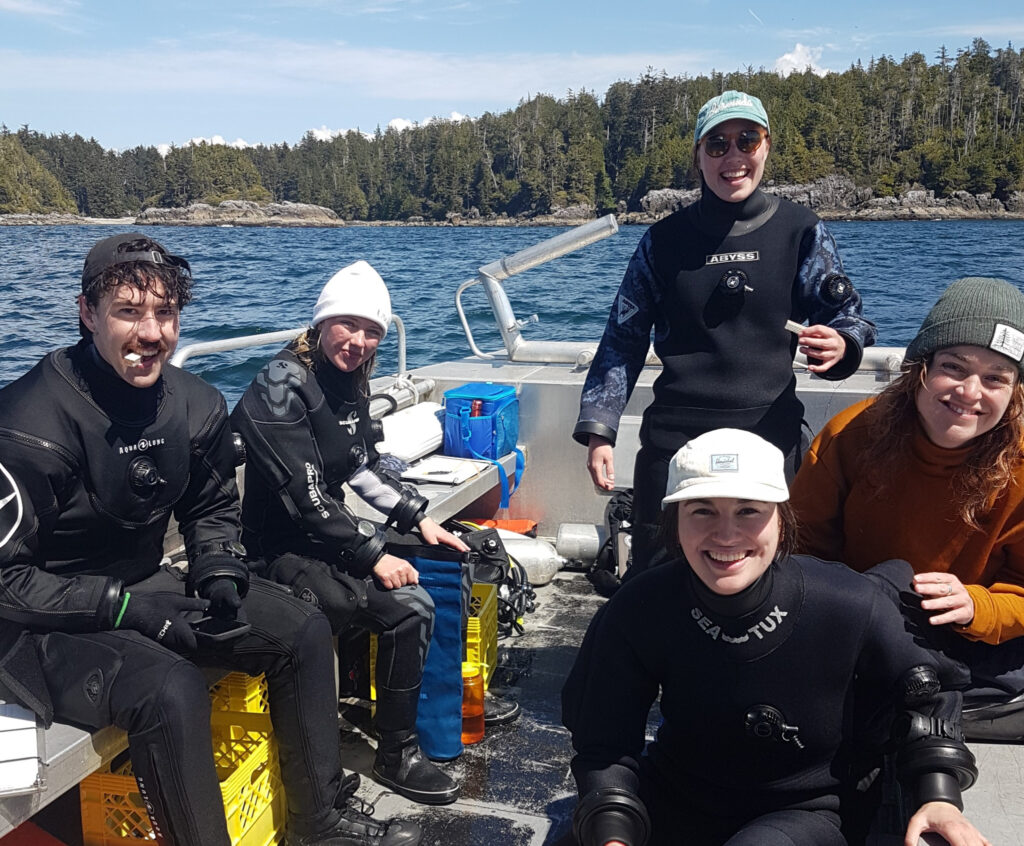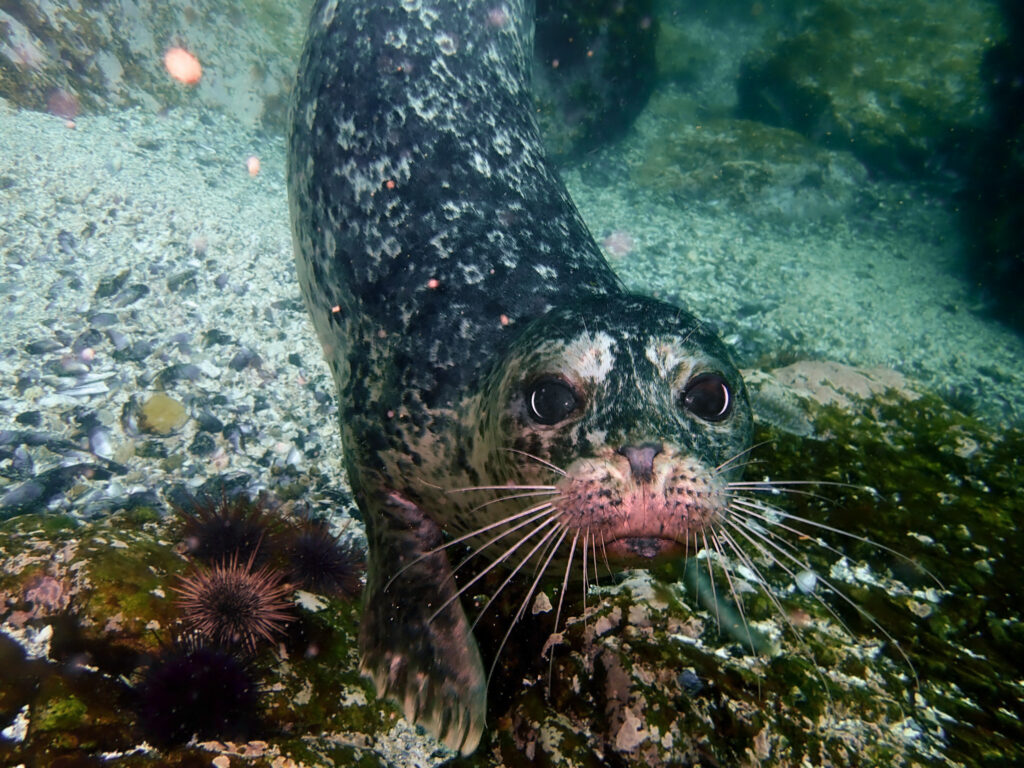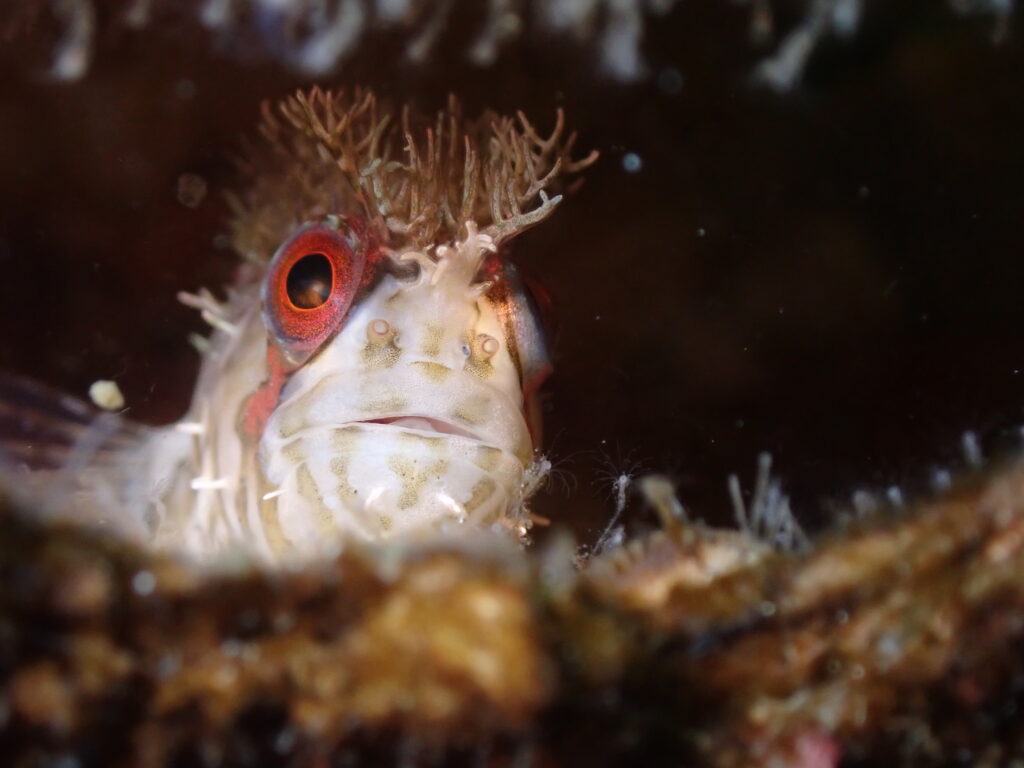In May 2023, a team of six scientific divers from the University of Victoria and Simon Fraser University embarked on the third annual RLS blitz with the Bamfield Marine Science Centre in beautiful Barkley Sound, British Columbia, Canada.
Barkley Sound is located on the west coast of Vancouver Island, sandwiched between Tofino and Bamfield, a small remote community within the traditional territory of the Huu-ay-aht First Nations and adjacent to the Pacific Rim National Park Reserve. This area is well known for its unique marine diversity, adding to our excitement during the dives, as well as the number of entries on the underwater clipboards. Our team included scientists from every career stage from undergraduate to professor, united by our mutual passion for the underwater world and all living creatures found in it.
We surveyed 20 sites for the third consecutive year, with four additional sites added based on recommendations and interest from the Huu-ay-aht First Nations. A new type of excitement filled our third year of excursions, as previous years' data now added some context to our underwater observations.
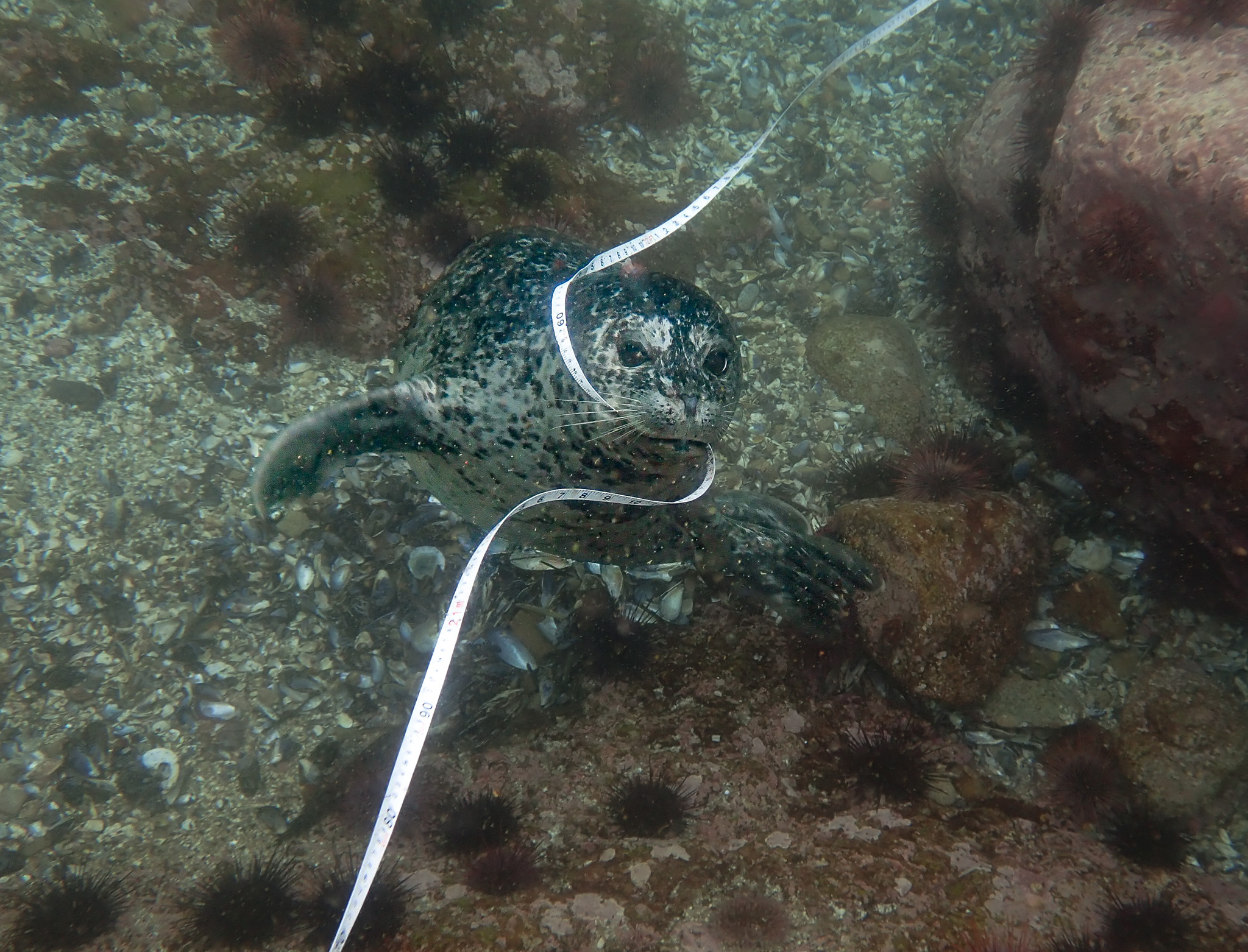
One positive trend that was apparent almost immediately was the return of the sunflower star (Pycnopodia helianthoides), not only in abundance, but also in increased size. In 2013, the sunflower star on the west coast of North America fell victim to a wasting disease event and has been slow to recover since. In our first year of surveys in Barkley Sound in 2021, only 15 Pycnopodia were recorded, most of them being under 2.5 cm, with one at 12.5 cm. This year, we recorded 123 Pycnopodia, with 16 over 12.5 cm in diameter, including one individual recorded at 30 cm.
In addition to seeing larger and more abundant Pycnopodia, we also recorded some first on-transect encounters, including a harbour seal (Phoca vitulina)! While focused, head down, counting red urchins (Mesocentrotus franciscanus), bat stars (Patiria miniata), and scalyhead sculpins (Artedius harringtoni) at one of the more remote sites, I noticed that the transect line seemed to dance a bit more than it usually does with the swell. Upon further inspection, we found a harbour seal twirling over the rocky reef with the transect tape in its mouth. As we trudged along doing our 70 minute biodiversity survey, this seal kept coming back to really take a look at us, bummed when we decided to roll up its new toy at the end of the survey.
While I was playing with charismatic megafauna, Em had their camera focused on the microfauna crawling along the seafloor. Nudibranchs are a favorite of theirs to photograph, and this year we observed many new species including the photogenic sea slug Berthella chacei, and the clown nudibranch, Triopha catalinae. T. catalinae is often mistaken for Triopha modesta, and the two species have only recently been differentiated. T. modesta (pictured below) is the species more commonly seen in northern waters, and you can distinguish the two by how bumpy or branchy the projections on their backs are. T. modesta has branched tubercles and dorso-lateral projections, however T. catalinae has no branching of it's lumpy appendages! In short, a macro photograph of these little fellows comes in very handy for identification purposes.
We also observed our first mosshead warbonnet (Chirolophis nugator), a spectacular but timid fish found hiding in crevices. This year marked our first sighting of another notorious crevice dweller: the spectacular giant pacific octopus (Enteroctopus dofleini)! These creatures are quite elusive, and unfortunately by the time Em tried to show their dive buddies the octopus, it had disappeared, leaving only photographs and a pile of eaten crabs as evidence of its existence. A few other notable on-transect firsts included a few fish species, like the tube-snout (Aulorhynchus flavidus), canary rockfish (Sebastes pinniger), and longfin gunnel (Pholis clemensi). We also added the shrimp Pandalus danae, striped sun star (Solaster stimpsoni), pink sea star (Pisaster brevispinus), and bering hermit crab (Pagurus beringanus) to our data sheets for the first time.
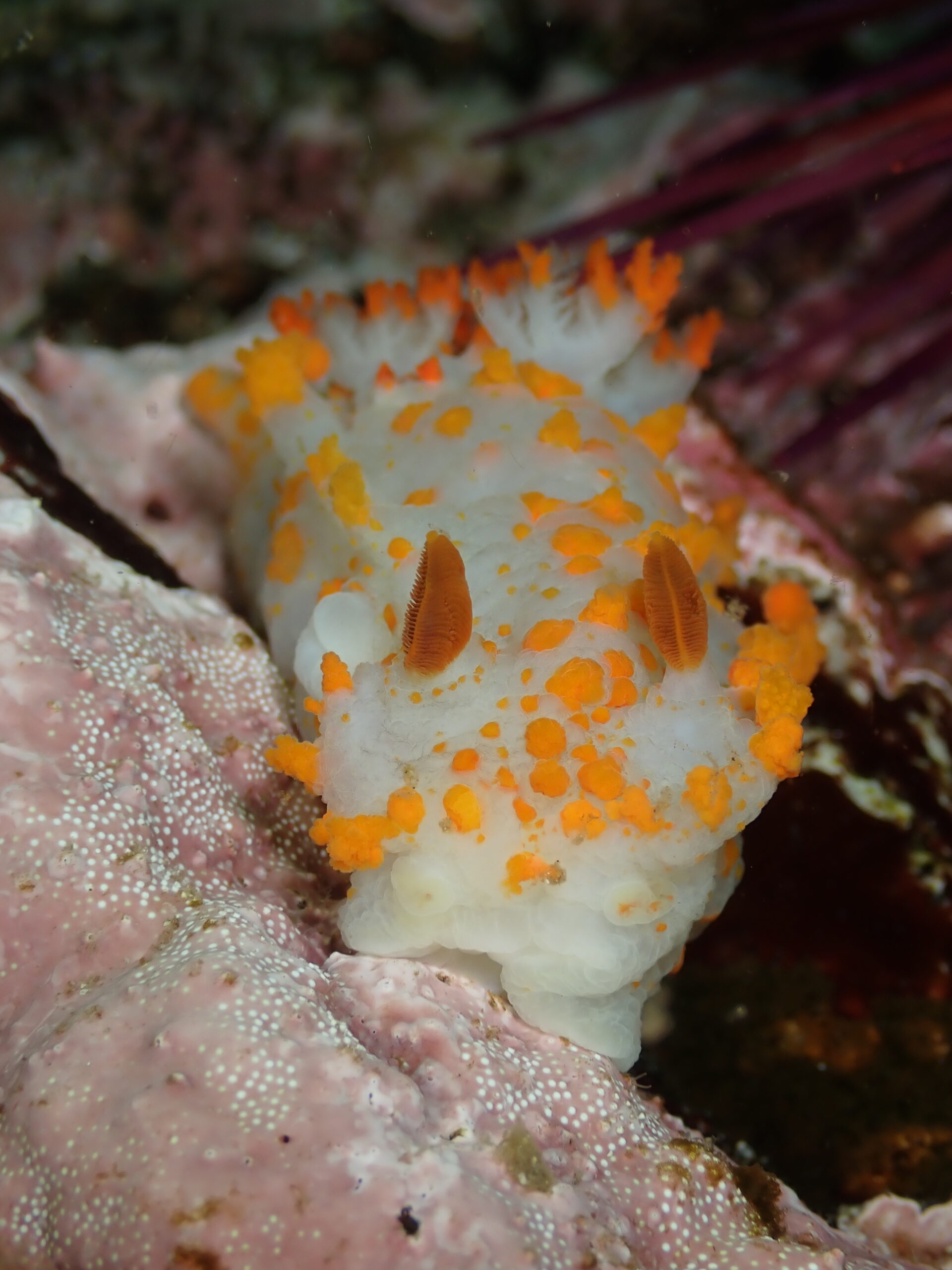
There's not much we can say under water, and not many ways we can communicate with the organisms that inspire us to do this work, but making faces and swimming alongside a seal while doing science, laughing with our team topside (somehow we didn’t only see sea cucumbers this year but also sea zucchini?), and getting excited about new colourful species on the other side of the camera lens – it really brings out a sense of play, belonging, gratitude, and wonder.
A huge thank you goes out to all of our team members: Andrew Bickell, Mara Bohm, Dr. Isabelle Côté, Valesca de Groot, and Em Lim. Dr(!) Jasmin Schuster and Dr. Amanda Bates, our fearless RLS Canada co-leads, put in a tremendous amount of planning to make these surveys happen year to year, making sure we collect quality data to contribute to the global RLS database, all while supporting training opportunities and underwater fun. We appreciate our Bamfield Marine Science Centre boat tenders and friends for always keeping an eye on our bubbles and getting us to our sites safely. We were also grateful to have Dr. Tom Bird join us on our dives this year, who, alongside Mara Bohm, piloted the use of photogrammetry methods as a potential option to create great visual representations of our transects. These surveys will feed into the global RLS database and help us understand patterns of species diversity and abundance on the rocky reefs of Canada’s West coast. This excursion was funded through the Bates Lab via NSERC funding awarded to Dr. Amanda Bates.
